Since the start of September it’s been foot full down with our discovery into NHS chlamydia primary care services.
We’ve been - as Eliot Hill’s excellent posters put it - exploring the problem space so we can then move on to testing options with hypotheses.
We’ve interviewed 30 patients, pushing hard to make sure we spoke a diverse range of people. We have also spoken to a good range of professionals who provide and support healthcare services. We’ve analysed everything we heard and got it down as a map, which we digitalised (using Google Draw, because it just worked).
Space in the office is at a premium so last weekend I printed off the map of our work, as a poster made up from sheets of A4, so the text on the map was just-readable. Over 450 Post its reduced to a map that was 2.37 metres long and 1.05 metres high. Here it is:
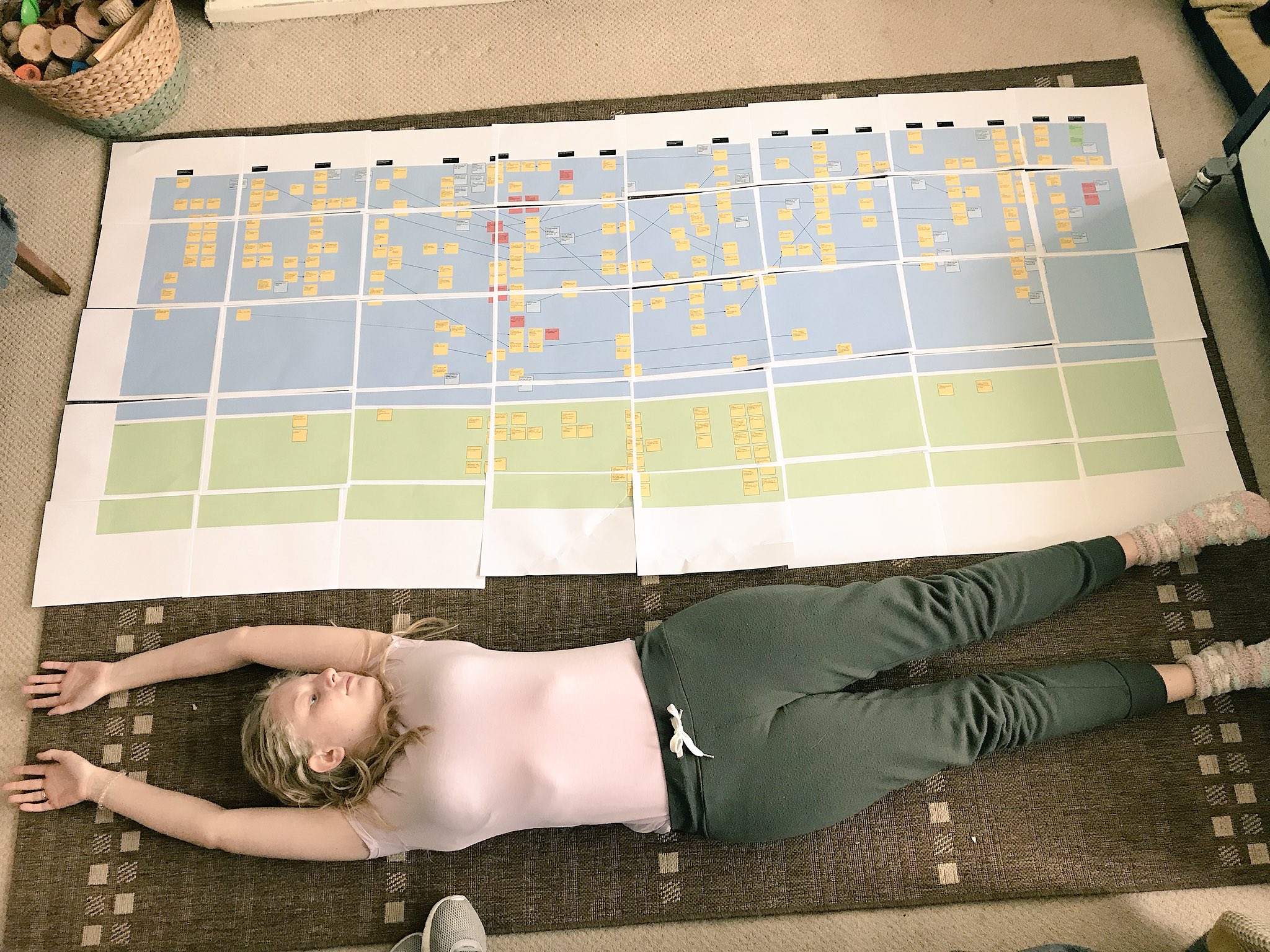
We captured people’s thoughts and emotions as well, so we didn’t just create a process map. We wanted to make sure we captured mindsets and motivations, the stuff that worked well, and the pain points.
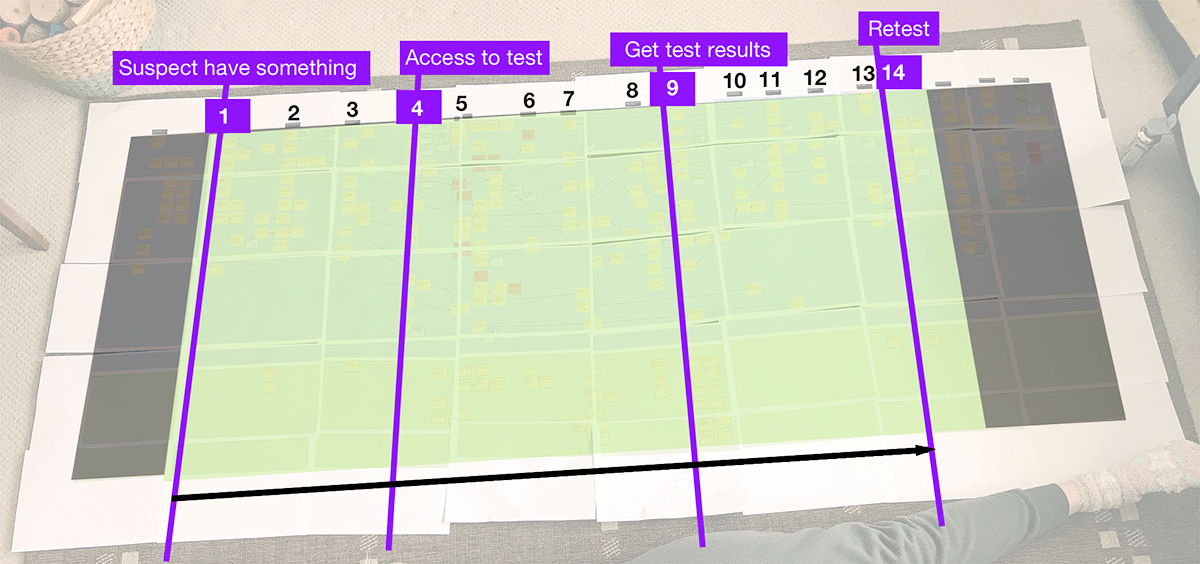
We have initially found most journeys have 14 points if the patient follows their treatment through to completion. (Sometimes there are 13 points. One person we interviewed had 22 points.) We will review this regularly as we speak to more people.
That is a lot to focus on. That is a lot to get unfocussed on.
To help us move forward – to test our ideas, our thoughts, our hypotheses – we decided a few weeks ago to put some dedicated time aside to work as a team, to work towards making something. Individually we have a lot of distractions around our work, so blocking time out to remove ourselves will allow us to find and then focus on one road in front of us.
That time was to be a five day design sprint. On Thursday we had the first day of our five days.
At the start we set some rules down we agreed on as a team:
- Be cool with each other.
- No devices in the room. (Unless we need them to do the actual work.)
- Doing not talking. (We’re here to work.)
- Share knowledge.
- Nobody knows everything. If you don’t understand, don’t be afraid to ask.
- Always be capturing.
There was another rule as facilitator I set myself:
Presume no-one has done this before
Take everyone along, leave no-one behind. Set the scene, explain what we are going to do. It’s teaching and it’s coaching.
The structure for the five days is based on the generally adopted design sprint model, with tweaks for the team and problem. (You can read about in various places online and in the Sprint book.)
Day 1: Understand the problem together
- Brief
- Set a long-term goal
- List sprint questions
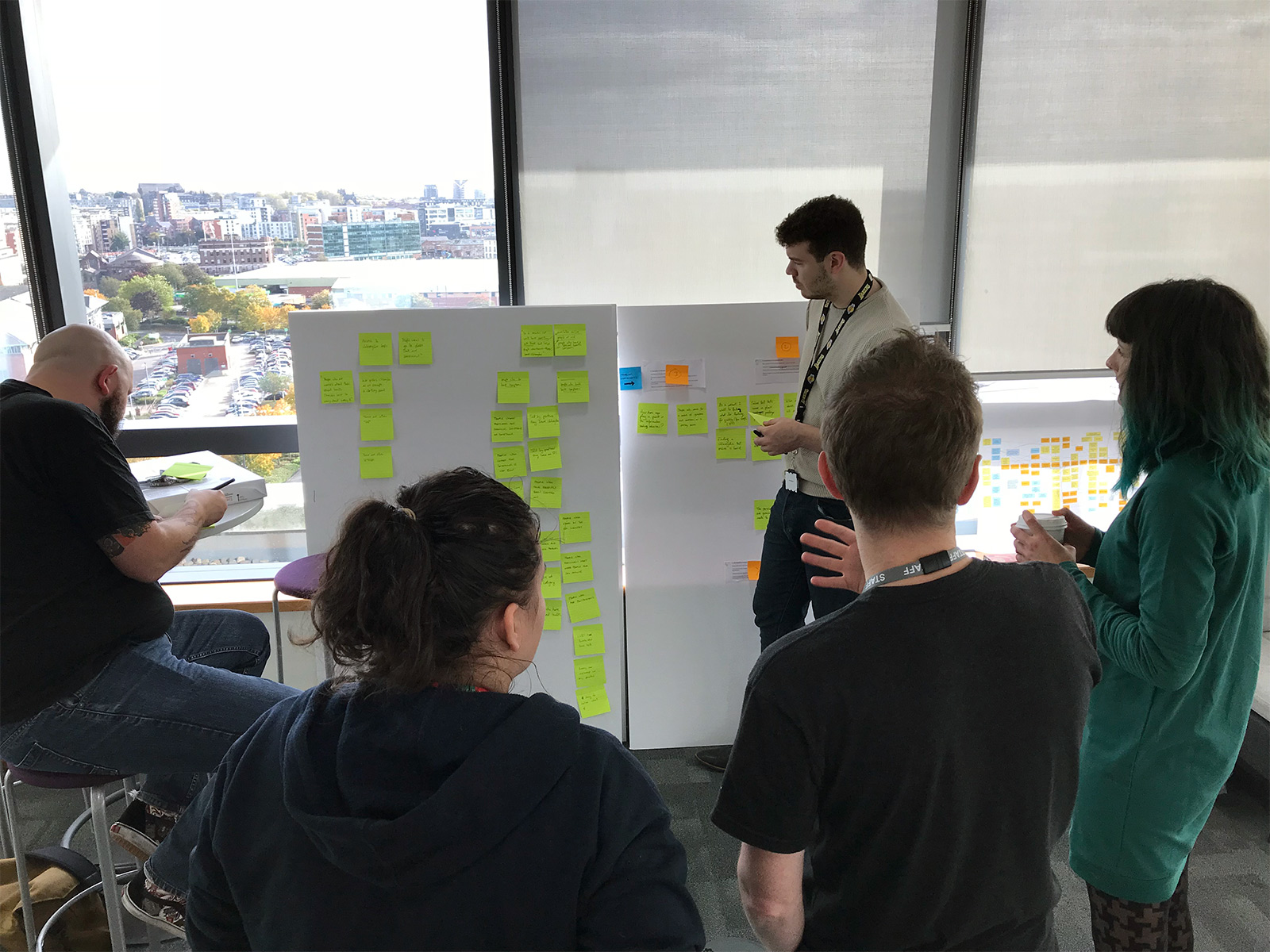
- Make a services map
- What do we know? (And what don’t we know?)
- Identify problems as opportunities
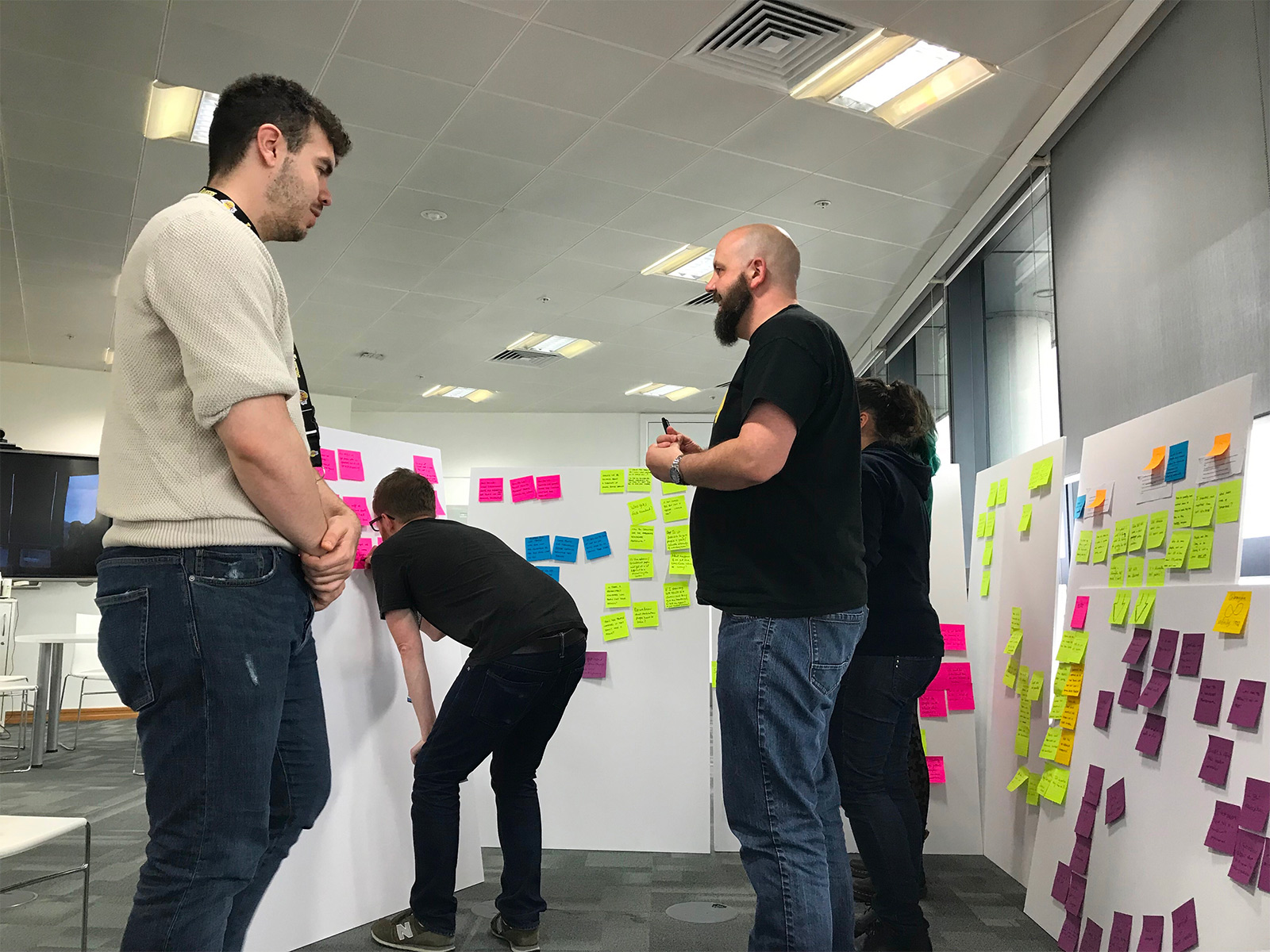
- Organise How Might We notes and vote
- Pick a target
Day 2: Explore the problem together
- Demos of other services and websites that sit in our journey
- Sketch a map of the service we could make
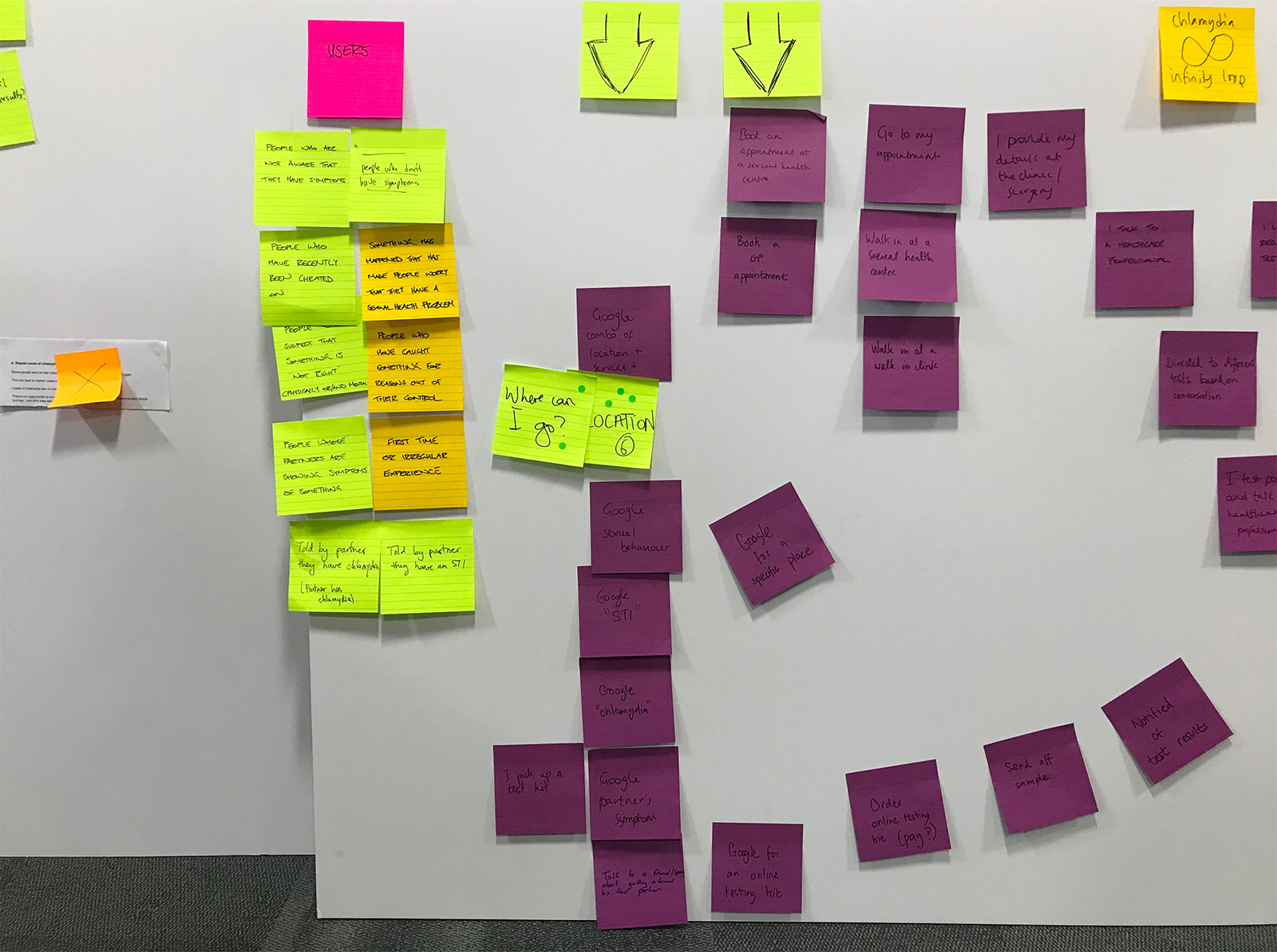
- Individually sketch ideas for a solution
- Present another person’s sketch back to the team
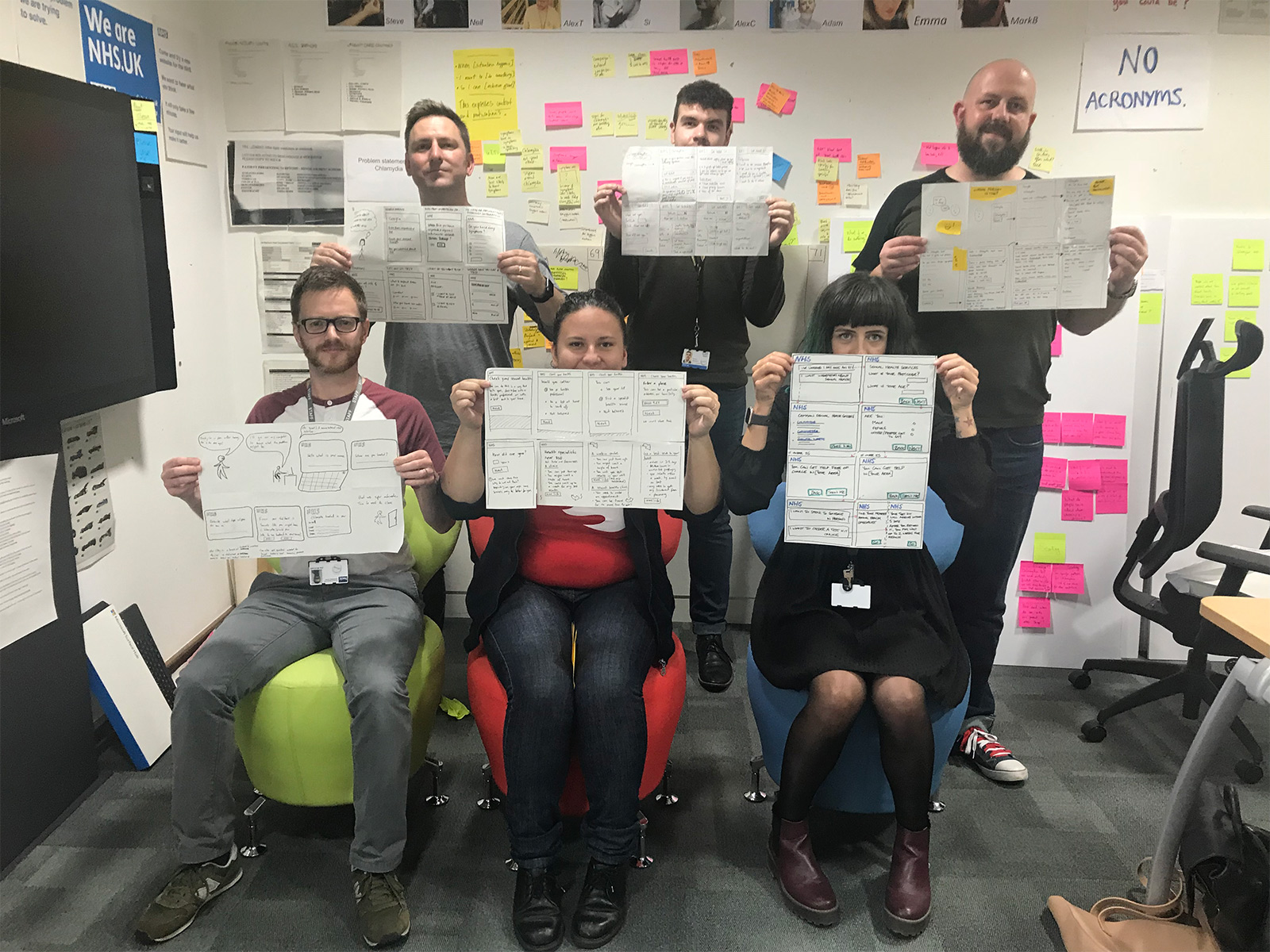
It’s the weekend as I tap this, a break before our last three days. It’s a good break, it’s a good place to have a break.
We’ve come through two days with a focus from that massive map I was looking at a week ago.
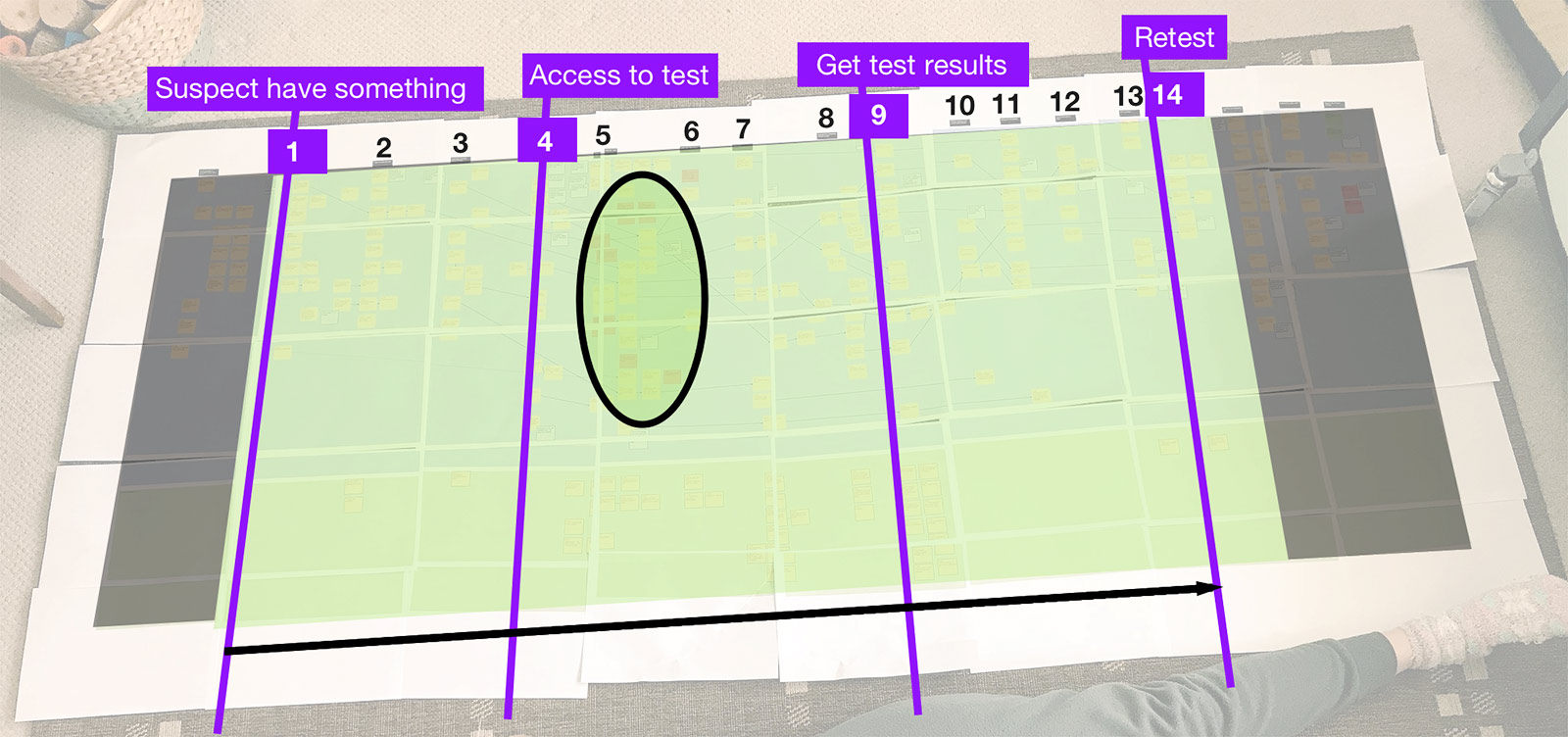
Design sprints can sometimes be seen and experienced as messy, chaotic, and tiring.
They don’t have to be with the right structuring and the right moderation from the facilitator and the decision maker in the team. You start with a lot, but work you way through, steadily, each exercise cutting down what is in front of you.
We’ve three days left to take our ideas around the problem, agree a singular structured approach to the problem, prototype it, and test it to learn more.
This post tagged with:
NHS Digital,
NHS beta